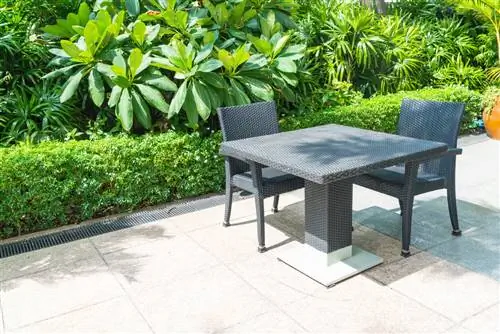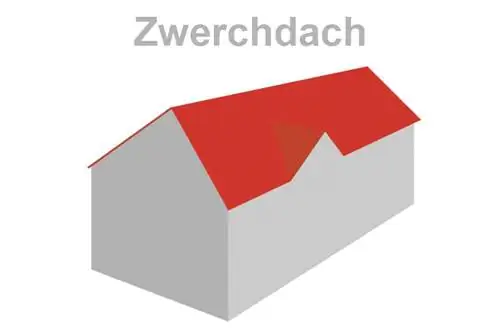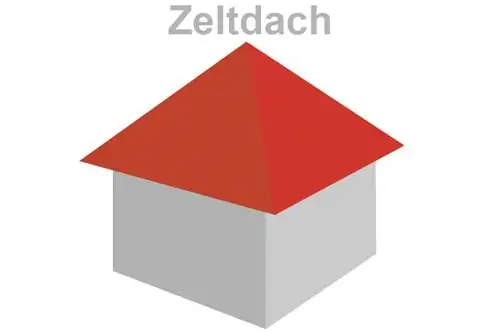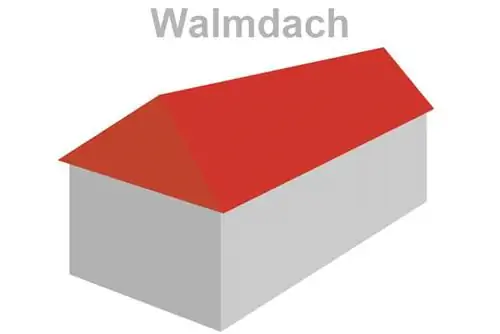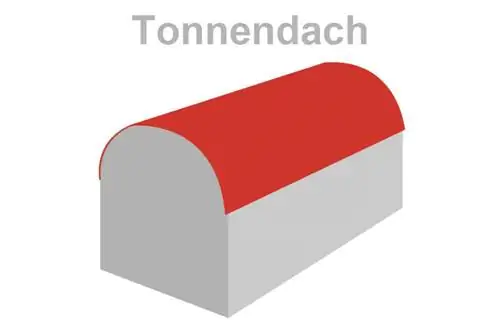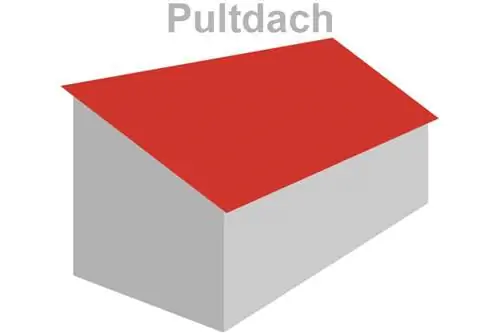- Author admin [email protected].
- Public 2023-12-17 03:39.
- Last modified 2025-01-24 12:45.
Granite is a hard rock that is mined in various forms all over the world. Thanks to its long-lasting properties and wide range of colors, this material is ideal for the floor of a terrace. If the granite slabs are laid well and treated carefully, they will last extremely long. However, granite does not only have advantages, the natural stone also has some disadvantages.
General
Granite is a deep rock that is particularly impressive due to its hardness. Before installing granite, every interested homeowner should give some thought to the use and purpose of the patio. If the outdoor area is used frequently and by many people, then granite slabs are the right choice. Excessive barbecue parties, long parties and damaging high-heeled shoes have little to no effect on this floor covering. Untreated granite patio slabs are slippery and a source of danger, especially when it rains. Therefore, they must be treated accordingly before laying. The purchase price is also an important factor; there are large price differences in this area. These result from both the qualitative differences and the distance to the mining area. However, since granite is a naturally occurring stone, consistent quality cannot be guaranteed.
- Granite is mined in all parts of the world
- Belongs to the hard rocks
- Granite slabs are purely natural products
- Anti-allergic and free from toxins
- Robust material with attractive attributes
- Consists of feldspar, mica and quartz
- Has resistant properties against fats and oils
- Is characterized by its weatherproof qualities
- Can be edited as desired
- Slip-resistant properties are important
- Achieved by flaming the material
- Heating causes the quartz to melt
- This minimizes the risk of slipping
Structure
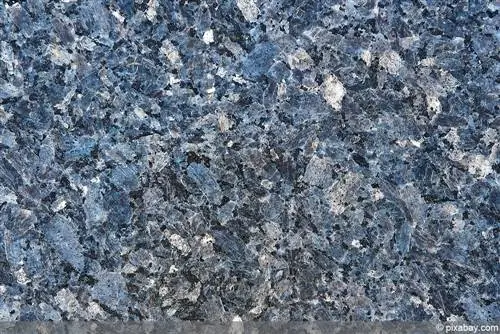
If you don't want scratches on the patio tiles, then particularly hard stones are recommended for the floor covering. The harder the natural stone, the less susceptible it is to the effects of other objects and corrosive liquids. The material granite definitely belongs to this category. Of course, even the hardest granite slabs are not indestructible, just as other floor coverings made of natural stone are not. Small damage can often be repaired on your own. It is important to use the right tools to avoid causing even greater damage to the stone during treatment. Granite has a grainy structure that is mostly evenly distributed. Depending on the mining area, this can sometimes run through the stone in streaks. Especially the granite slabs with a lower quality often have many irregularities.
- Granite is well suited for terraces
- Features long-lasting qualities
- Different structure, either coarse or fine-grained
- Is characterized by its easy-care properties
- Easy to polish and extremely durable
- Extremely stable and abrasion-resistant
- Insensitive to high heat
- Any scratches that may occur can be repaired with a brush
- However, the brush should not be too hard
Tip:
An additional polish makes granite even more robust against abrasion and dirt from outside.
Colors
Many people associate granite with gray and darker shades of color, which appear slightly cool and inconspicuous. However, the granite slabs are also available in attractive colors that have a warm shimmer. If you want to design your patio tiles in homely colors, you can definitely warm up to yellow and brown nuances. Due to the extensive color palette, granite slabs can be easily combined with other building materials to be used on the terrace. This creates a harmonious overall impression and the outdoor area becomes a welcome extension of the living space. Although granite is available in many colors and textures, the variety offered is not as wide as ceramic tiles. When it comes to ceramics, there are countless possibilities in terms of color, pattern and design that can be perfectly adapted to the rest of the home design.
- Granite is available in many different colors and variations
- Brown, blue, yellow, green, red, violet and white are friendly
- Gray and black colors are ideal for monochrome design
- Anthracite-colored granite slabs are very discreet
- The terrace floor lights up with light yellow and sunny yellow shades
- There are even pink shades to choose from
- Colors and shades do not fade over time
Advantages
If you are enthusiastic about natural materials, granite slabs for the terrace are a good choice. There are a large number of patterns and colors, with attractive attributes and natural properties. Stones in a lower grade are cheaper because they have variations in color and size. Granite has a shiny surface that can be maintained for a long time. Thanks to the hard surface, the material can withstand heavy use with all kinds of footwear. If the user is looking for a long-lasting patio floor that does not need to be replaced so quickly, then granite is the right solution. Thanks to its robust properties, it can last for decades and even centuries if well cared for. Thanks to the color fidelity of granite, even after a long time it will look the same as the first day it was installed.
- Granite lasts for many years due to its hardness and density
- Perfect material for outdoor use
- Exudes classic elegance, always stays on trend
- Leaves an aesthetically pleasing impression
- Material does not weather and has high abrasion resistance
- It is even acid-resistant
- Hypoallergenic, ideal for people with allergies
- Resistant to bacteria, hygienic choice for flooring
- In addition, extremely resistant to water and moisture
- Easy to clean, just needs regular sweeping and mopping
- If the material has been sealed, then it is resistant to stains
- Even direct heat does not change the surface
- Due to long-lasting durability, no regular maintenance is required
- Harmonises well with other materials such as wood and metal
Tip:
Thanks to its fire and heat resistant qualities, granite can withstand very high temperatures. That's why the material is ideal as a floor covering for a terrace on which a grill or an oven is to be placed, for example for baking pizza.
Disadvantages
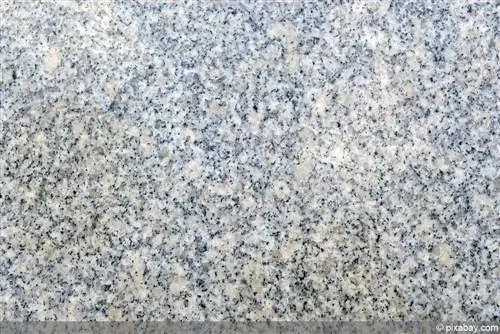
For many homeowners, the high purchase price of granite is the biggest disadvantage. The material is extracted from quarries all over the world. If the respective quarry is located extremely far away, then the transport costs significantly increase the purchase price of granite. Installing granite countertops is complicated and time-consuming, which is why a professional is needed. It is not advisable to lay granite on the terrace yourself as the material is very heavy. In addition, extremely high precision and good knowledge of the subject matter are required when installing. In winter the material cools down noticeably, but it doesn't get as cold as marble. If soft or very delicate objects with brittle properties fall on the surface of granite, they will most likely break because of the hardness. If damage does occur, repairing severely damaged granite can prove expensive.
- Purchase price of granite slabs is very expensive
- Must be polished by professionals
- Due to the hardness, processing is time-consuming
- Heavy weight requires special precautions
- Installation causes extremely heavy tool wear
- Complicated designs increase the purchase price
- Granite floor gets quite cold in winter
- Highly polished granite slabs are often slippery
- When material is wet, it becomes particularly dangerous
- Therefore needs anti-slip treatment, flames are ideal
- Does not leave a soft and comfortable feeling under your feet
- Edges are sharp and blunt, with a high risk of injury
- Deals must be rounded off, further increase in costs
- Lines on the joints are difficult to clean
- Requires sealing to avoid contamination
- Cracked granite requires a professional to repair it
- The granite color often changes after repairs

